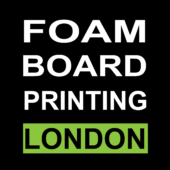Foam board, often referred to as foamcore or foam board, is a versatile and lightweight material commonly used in various applications, including printing, crafting, presentations, and signage. Its unique composition and structure give it distinct advantages, making it a popular choice among artists, designers, and businesses alike. In this article, we will explore what foam board is made from, its characteristics, and its various uses.
Composition of Foam Board
Foam board typically consists of three primary components: a foam core sandwiched between two outer sheets. The core is usually made from expanded polystyrene (EPS) or extruded polystyrene (XPS), both of which are types of plastic foam. These materials are known for their lightweight and insulating properties. The outer layers are typically made from a sturdy material, often paper or plastic, which adds strength and rigidity to the board.
- Foam Core:
- Expanded Polystyrene (EPS): EPS is a closed-cell foam material known for its excellent thermal insulation and soundproofing properties. It is created by expanding polystyrene beads through a heat process, resulting in a lightweight yet durable core that provides structural integrity.
- Extruded Polystyrene (XPS): XPS is another type of foam core made through a continuous extrusion process. It offers similar lightweight characteristics as EPS but is denser and has better moisture resistance. XPS is often used in applications where increased strength and durability are required.
- Outer Sheets:
- The outer layers of foam board can be made from various materials, including:
- Paper: Many foam boards have a paper surface that allows for easy printing, painting, or adhering other materials. This type of board is commonly used for presentations and displays, as it can be easily customized.
- Plastic: Some foam boards feature a plastic outer layer, offering additional protection against moisture and environmental factors. These boards are ideal for outdoor signage or projects that require extra durability.
Characteristics of Foam Board
The combination of its foam core and outer sheets gives foam board several desirable characteristics:
- Lightweight: Foam board is exceptionally lightweight, making it easy to handle, transport, and install. This characteristic is especially beneficial for large displays and signage.
- Rigid and Strong: Despite its lightness, foam board is rigid and can hold its shape well. It provides adequate support for printed graphics and can withstand some level of impact without bending or breaking.
- Easy to Cut and Shape: Foam board can be easily cut with a utility knife or a specialized foam cutter, allowing for precise shapes and designs. This property makes it a favorite among crafters and designers.
- Printable Surface: The smooth surface of foam board allows for high-quality printing, making it an excellent choice for posters, signs, and displays. It readily accepts various printing techniques, including inkjet, UV printing, and adhesive applications.
- Versatile Applications: Foam board can be used in numerous applications, including mounting photographs, creating displays for trade shows, crafting, signage for events, and architectural models.
Common Uses of Foam Board
Foam board’s versatility has led to its widespread use across different industries and sectors:
- Advertising and Marketing: Foam board is commonly used for point-of-purchase displays, trade show booths, and promotional materials. Its lightweight nature allows for easy transportation and setup.
- Art and Design: Artists and designers often use foam board as a backing for their artwork or as a canvas for creative projects. Its cuttable nature allows for intricate designs and models.
- Education: Foam board is frequently used in classrooms for projects, presentations, and dioramas. Its ease of use makes it a go-to material for students and teachers alike.
Conclusion
Foam board is a practical, lightweight, and versatile material made from a foam core sandwiched between sturdy outer sheets. Its unique composition provides strength, rigidity, and adaptability, making it an ideal choice for various applications, from advertising and marketing to crafting and education. Whether you’re creating a striking display for a trade show or working on an art project, foam board’s qualities make it a valuable resource in today’s creative landscape.
